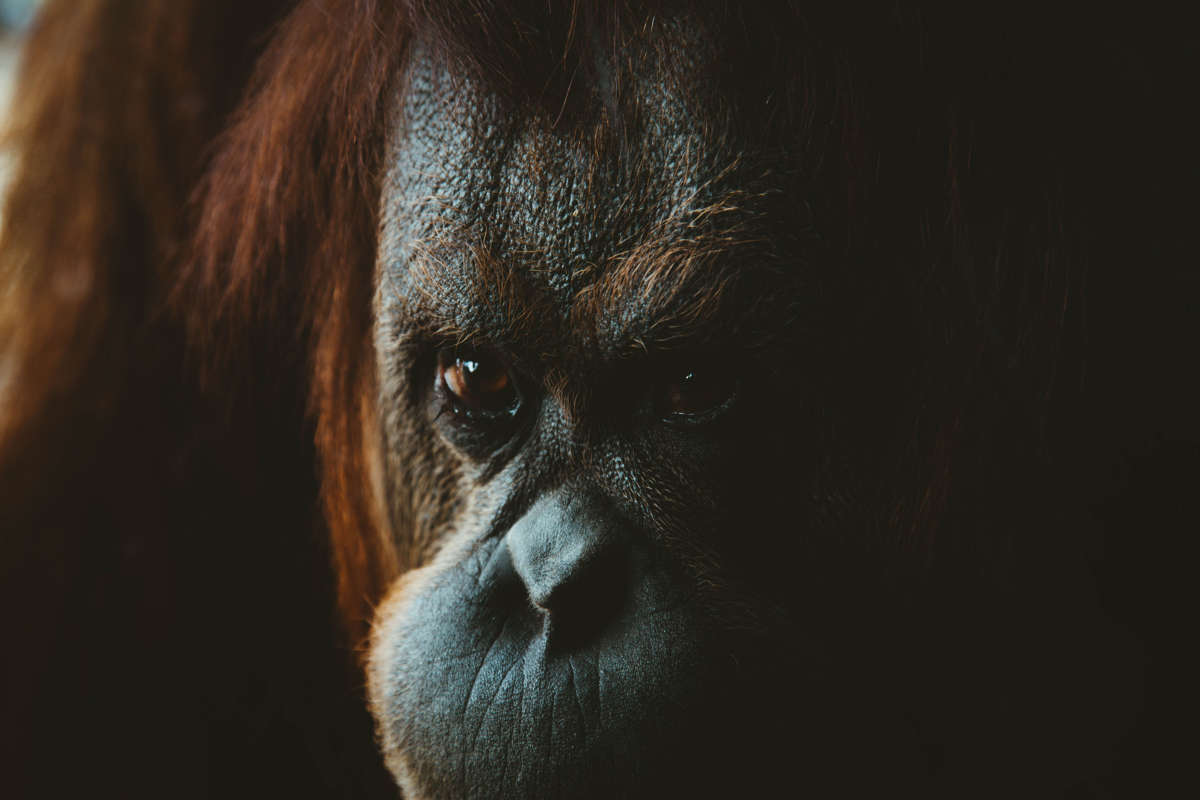Mutilated orangutan bodies discovered near palm oil plantations captivated public attention throughout 2018 in Indonesian Borneo. One hundred and thirty bullets shot from close range riddled one orangutan carcass. Seventeen bullets were found in another decapitated orangutan. Conservation workers observed signs of torture in a third body discovered near a newly opened palm oil plantation.
A video of an orangutan battling a bulldozer clearing forest in Borneo for palm oil went viral in international media last year. Months later, Iceland banned an animated anti-palm-oil ad featuring a lost, orphaned orangutan finding her way into a human home. In 2019, Norway pressured Indonesia, the world’s largest producer and exporter of palm oil, to adopt more sustainable harvesting practices by reducing its palm oil imports from the country, but did not ban palm oil itself. With the exception of Norway, the world’s countries have remained either relatively quiet, or completely uninformed about, Indonesia’s growing environmental crisis and various animal rights violations.
Deforestation and habitat destruction are rampant in Southeast Asia, mainly due to palm oil production. The region alone produces 87 percent of the world’s palm oil, which can be found in snack foods. The 18 million hectares of palm oil plantations in Borneo have destroyed more than half of the island’s rainforests, leaving wildlife (and especially orangutans) vulnerable to abuse and death.
Indonesia’s forests face varied and complex pressures. A combination of palm oil production, hydroelectric project development and infrastructure development is driving habitat loss. To slow global deforestation rates, the United Nations in 2015 dedicated Goal 15 of its Sustainable Development Goals to “life on land.” National targets for conservation in Indonesia focus on increasing biodiversity and halting illegal wildlife trafficking by 2020. As we head into 2020, considerable work remains unfinished. One clause of Sustainable Development Goal 15 explicitly calls upon all countries to “take urgent and significant action to reduce the degradation of natural habitats, halt the loss of biodiversity and, by 2020, protect and prevent the extinction of threatened species.”
The International Union for Conservation of Nature classified Bornean orangutans as critically endangered in 2016. Orangutans are still being hunted as intruders on palm oil plantations, despite protective regulations being in place since 1985. An estimated 104,700 orangutans survive in Borneo today, down from a population of 230,000 in 2007.
In the last 20 years, palm oil producers have slashed orangutan habitat in Indonesia and Malaysia by more than 80 percent. The toxic, hazardous phenomenon of transboundary haze — seasonal air pollution from burning forests in Indonesia and Malaysia that crosses international borders to affect up to six countries in Southeast Asia — is a result of slash-and-burn practices to clear plantations. In 2015, the World Bank Group reported smog levels over 1,000 on the Pollutant Standard Index (PSI) in Indonesian villages near the slashed-and-burned clearings. A PSI level ranging over 300 is considered hazardous for humans and animals.
Indonesia’s forests are being decimated for palm oil production at an alarming rate. The area of Indonesian forest burned by palm oil producers for clearing just in 2015 was more than 26 times the area of forest destroyed by all the California wildfires of November 2018.
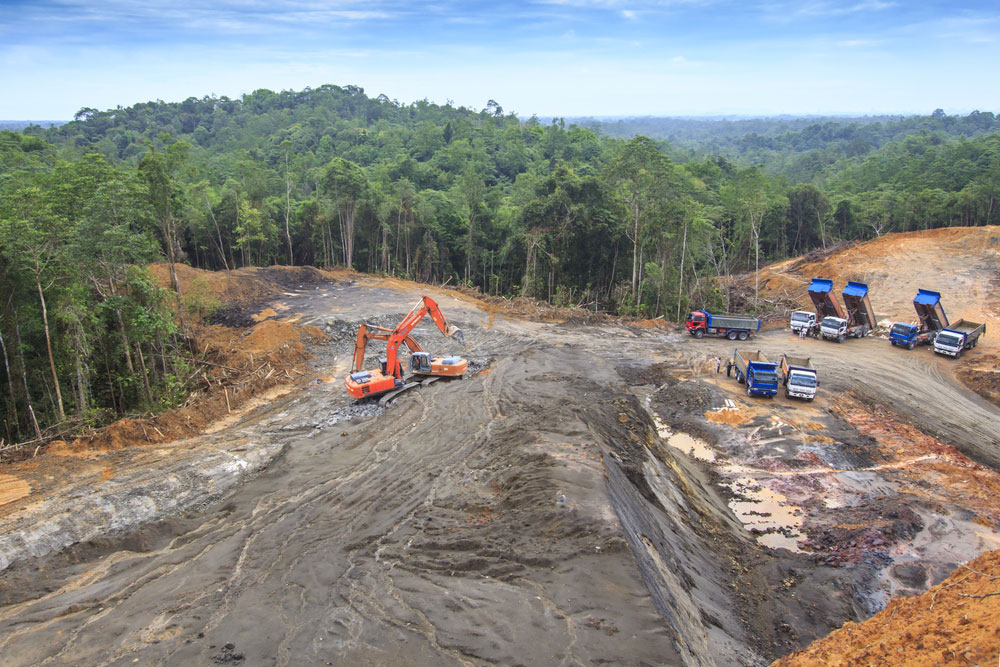
A narrow strait separates Indonesia from Singapore, my home. Since the haze doesn’t respect international boundaries, schools and institutions in Singapore began distributing protective breathing masks in 2015. Throughout September and October of this year, the air pollution was so thick that simply going outside caused watering eyes and burning throats. With haze this suffocating in Singapore, I began to wonder what is happening across the water where the forests blaze. To find out why Indonesian forests continue to burn year after year and why an endangered species is still being killed, I embarked upon several months of investigative reporting to speak with Indonesian conservationists directly.
Standing at the Receding Borders of Indonesia’s Demarcated Forests
The Centre for Orangutan Protection (COP), based in Jakarta, Indonesia, works at the front lines, campaigning against habitat destruction in Borneo, rescuing and releasing orangutans, and actively protesting palm oil companies. One of Indonesia’s most dogged activist groups, COP hijacked the 2013 Roundtable on Sustainable Palm Oil in Medan, Sumatra, by barging in on the meeting dressed in orangutan costumes. In the 20 minutes that elapsed before the police removed the activists, they disrupted the conference and paraded around a banner urging onlookers to boycott the palm oil companies present at the meeting. Leading COP’s habitat campaign efforts is Paulinus Kristianto from Kalimantan, Borneo. Deforestation is a deeply personal issue for Kristianto, an Indigenous Dayak. Kristianto, a videographer by trade, documents what’s happening in Kalimantan to educate the Dayak people and the world.

The Dayaks share the forests with orangutans; the Dayak people well understand that their fates are intertwined. “When I see the Dayak tribes, my family, lose the forest, we can’t do anything. We try to fight and the companies send us to jail,” Kristianto told Truthout. “So, I must go to fight. It comes from my heart. I must prove to the people what’s happening is bad.”
The Dayaks are witnessing the end of their way of life. Indigenous cultures in Borneo are being threatened by the deadly trifecta of palm oil extraction, hydroelectric development and commercial logging. Kristianto embraces the danger and sacrifice that his videography and activism entail. On his journey as a conservationist, he recounts, “The first year, I said, these are my adventures; the second year, I said, this is my work; the third year, I said, this is my life. When you see the eyes of the orangutan, there’s no escaping.”
COP dispatched Kristianto to Central Kalimantan in 2015 to save animals endangered by the slash-and-burn fires blazing across palm oil plantations. Uncontrollable flames spread throughout Borneo, including to West Kalimantan where Kristianto lives. “My house was in the peat area. I was in Central Kalimantan trying to stop the fire but I couldn’t get to my home,” Kristianto told Truthout. “The same moment I was in the fire there, my grandfather called me to say, ‘Linus, your house is burning. But it’s okay; our family is okay. Don’t worry about it; I’ll stop the fire here.’ He told me we will build the house again. My battery died, and at night I finally went back into town and charged my phone — and there was a text from my mother saying that my grandfather died [in the fires], just two hours after calling me.”
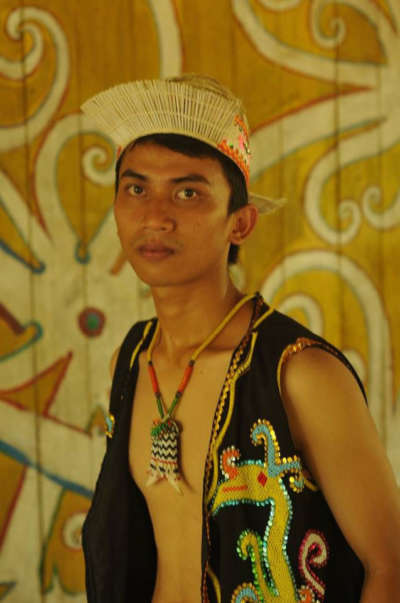
When Kristianto finally reached his home, days later, there were only ashes where his wooden house once stood. He vowed to quit his conservation work to be with family, but his surviving family members and colleagues urged him to not let his grandfather’s death be in vain.
Kristianto continues campaigning against habitat destruction by palm oil plantations that encroach into the rainforest and investigating crimes against wildlife. According to Kristianto, “We’re just like firefighters. If there’s a problem, we go there. I don’t know much about the data of how many orangutans are in the forest. But if you ask me how many died there, I can tell you.”
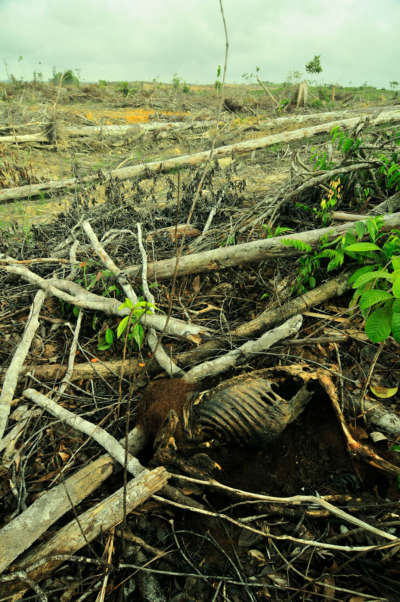
Dayaks are committed to protecting their forests, and their own communities by extension. A misleading study claims that orangutan populations are in decline due to hunting by Dayaks. Supporters of palm oil production widely cite this dated survey, published in 2011 with the assistance of the Indonesian Ministry of Environment and Forestry, to justify their destructive activities. The survey, which observed kill rates by Dayaks to be higher than expected, does not align with Kristianto’s lived experiences. “In all my seven years of conservation work, I’ve never seen an orangutan killed because of hunting by Indigenous people,” he said. “Villagers are not causing the spike in orangutan mutilations and murders.” According to Kristianto, palm oil companies are killing the orangutans; their incentive is to protect their private, commercial property from “agricultural pests.”
Palm Oil Costs an Arm and a Leg — Literally
Some palm oil companies place bounties on orangutans in an effort to minimize the damage that orangutans inflict on their crops. As plantations continue to encroach upon orangutan habitats and destroy their sources of wild fruits, the primates resort to eating palm oil fruit to survive. Over the last decade, companies have been offering payments of up to USD $100 to villagers and workers who bring back a severed orangutan foot, hand or head as evidence of a killing.
Indonesian law states that it is illegal to kill an endangered species like an orangutan; doing so could result in up to five years in jail and a fine of USD $7,400. Despite some arrests of individuals, the Indonesian legal system has never handed down a full sentence commensurate with the crime. Only one notable case of a Malaysian-owned palm oil company went to trial in 2013. The company was found guilty of paying two of its workers to kill orangutans. The plantation manager and the two workers were found guilty. Despite COP campaigning during the trial for a full sentencing, the manager and two workers all spent eight months in jail and were fined less than a third of the maximum fine stated by the 1990 Conservation of Biodiversity and Ecosystems Law.
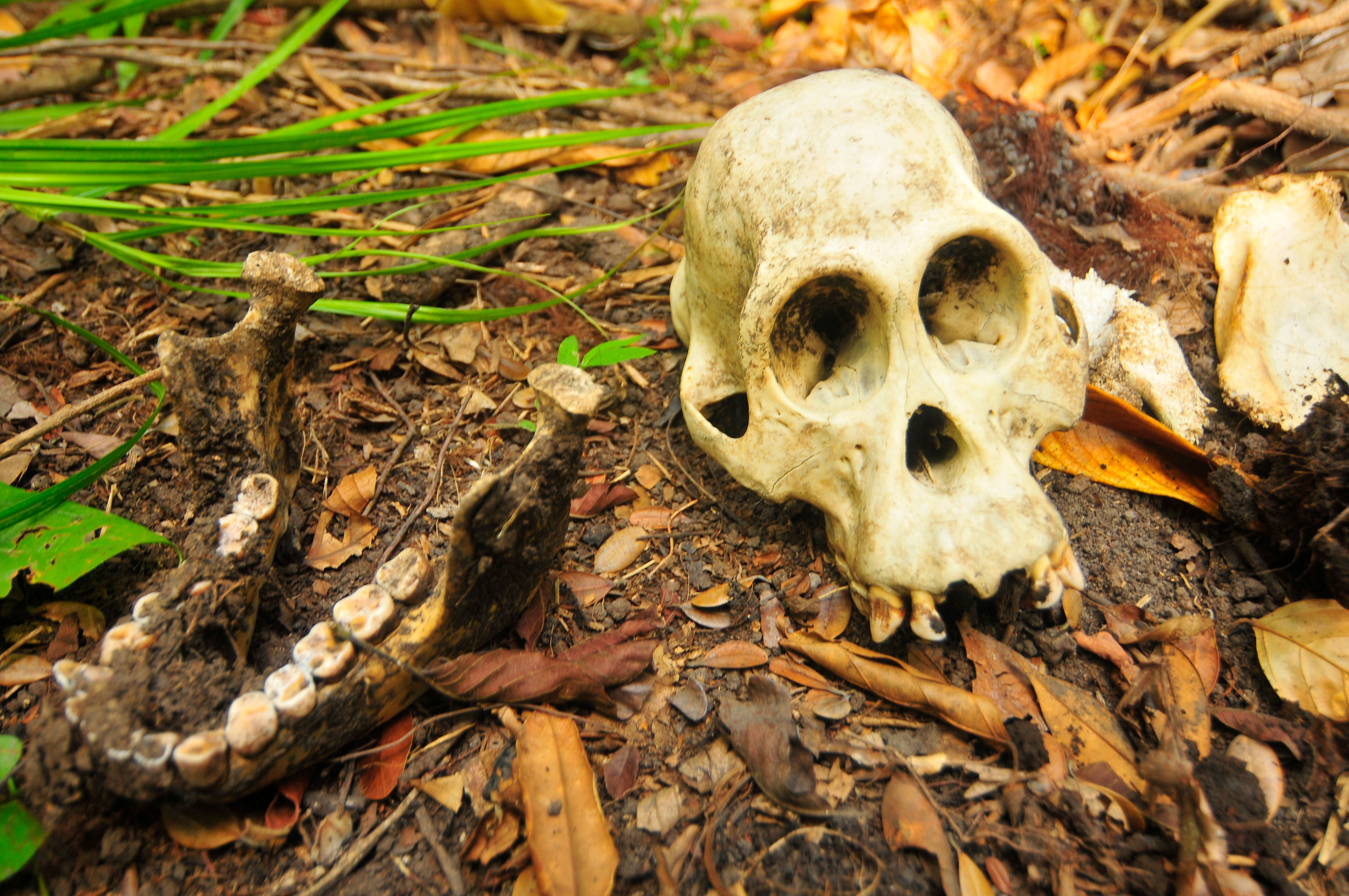
Kristianto performed the autopsy of the orangutan who in 2018 was found with 130 bullets lodged in his body. He determined that the orangutan not only was shot at extremely close range, but also suffered in this wounded condition for three days before dying. Officials found the orangutan near PT Wana Sawit Subur Lestari’s newly opened plantation. Police convicted the perpetrator, but the punishment was a mere seven months in jail.
In 2018, the federal government of Indonesia issued a moratorium on the opening of new palm oil plantations. However, local governments that ignore the moratorium and continue to allow the establishment of new plantations face no consequences from the federal government. Palm oil companies that already hold local permits can still establish new plantations. Abetnego Tarigan, former executive director of the Indonesian Forum for the Environment and a senior adviser to the Indonesian president, has a unique perspective on the government’s stake in palm oil. “The strategy to maintain the position of Indonesia in the palm oil sector is to improve productivity,” Tarigan told Truthout. “So the moratorium is actually a way to improve the palm oil sector by increasing productivity.” According to Tarigan, the federal government is encouraging palm oil producers to focus more on regenerative agricultural practices to expand production, rather than continuing to destroy virgin forest.
Tarigan agrees that the federal government’s moratorium on new plantations by itself is not enough to curb palm-oil-driven deforestation, and says that stricter reviews of palm oil development permits are crucially needed. “It’s public knowledge that many permits are released to bribery without the support of an environmental impact assessment or disaster risk,” he said.
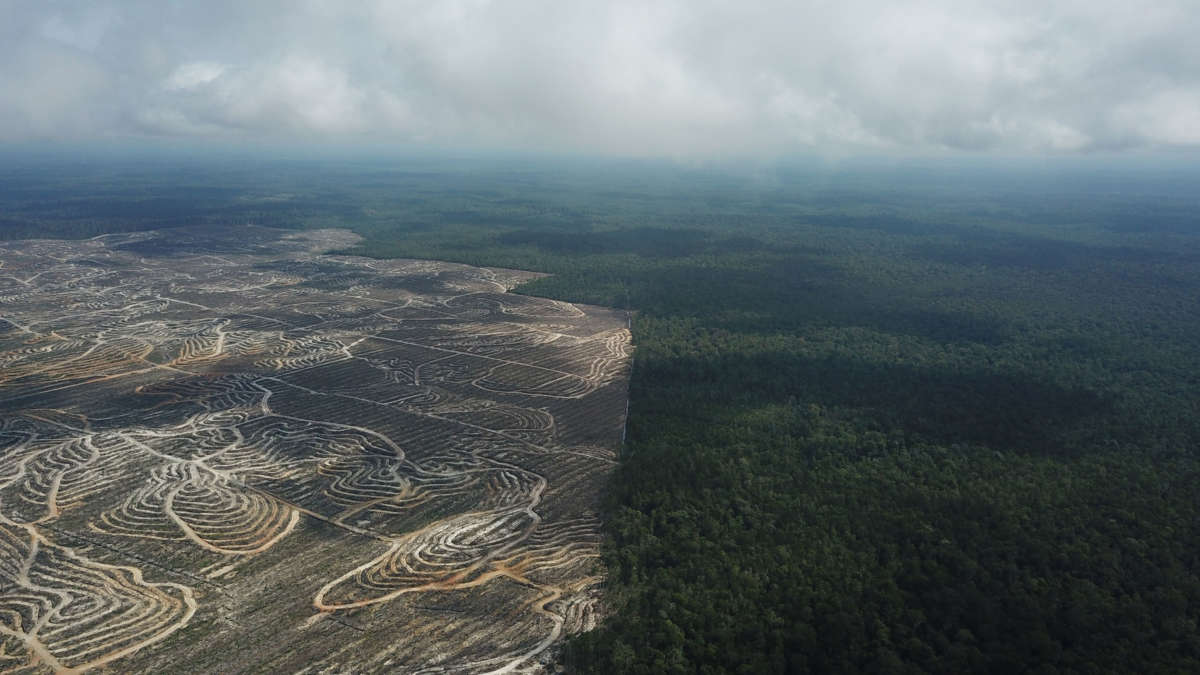
According to the World Bank, the agriculture industry employs about 30 percent of the Indonesian workforce, with the palm oil and pulp-and-paper industries being key constituents of the sector. Palm oil surpassed oil and gas as the biggest component of Indonesia’s Gross Domestic Product in 2016. Even Kristianto, who has seen first-hand the devastation caused by palm oil, declares himself not to be anti-palm oil. “Palm oil is still needed in Kalimantan,” he says. “So many places are isolated, and palm oil companies build infrastructure.”
Borneo Orangutan Survival Foundation (BOSF) Director Jamartin Sihite pulls all threads of human development into the picture. “You cannot talk conservation with hungry people. Give people a way to find an alternative livelihood. It’s so complicated with poverty alleviation, rescue and release, monitoring and combating fires,” said Sihite.

In 2011, BOSF was unable to release a single rescued orangutan, as there was insufficient suitable, safe habitat available. Sihite told Truthout that after unsuccessfully lobbying the Indonesian federal government to protect more forest to facilitate the rescued orangutans’ release, BOSF approached local governments. BOSF and local governments in Kalimantan reached an agreement to permit the group to buy the licenses of logging companies (valid for 60 years) and pay property taxes for land suitable for orangutan release. The foundation now has 557 orangutans in rescue and rehabilitation centers around Kalimantan.
Conservation Means Rebuilding Forests, Not Cages
For those orangutans fortunate enough to be rescued from habitat destruction and protected from hunters, the journey back to the forest is not guaranteed. The Wildlife Rescue Centre (WRC) in Yogyakarta (also referred to as Jogja), Java, Indonesia, supports the COP’s program to rehabilitate and release orangutans. The WRC cares for orangutans, macaques, sun bears, gibbons, eagles, monkeys, cassowaries and many more animals rescued from illegal trade or poaching.
Habitat conservation does not always lead to rescued animals’ full rehabilitation and release, however. Many of WRC’s orangutans and other animals are too old to be released back into the wild and must remain in captivity as permanent residents.
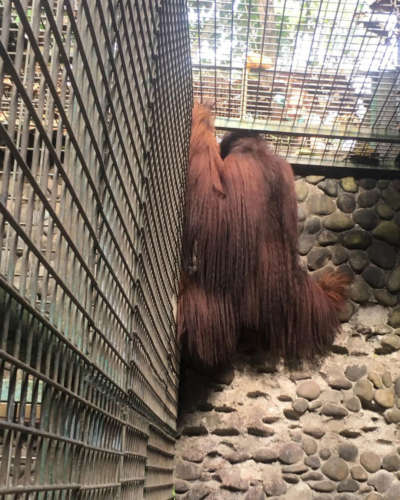
For rehabilitated animals, habitat for release is scarce. “Right now, it’s hard to find a habitat to release the animals,” said Ignatius Prasetyadi, volunteer coordinator for the WRC. “For example, most of the national parks [in Indonesia] are already full of eagles, and eagles are territorial, so we almost can’t release more [rescued animals]. The forests are overfilled and conservation centers are at maximum capacity. The solution isn’t to make more cages, but to build enclosures, sanctuaries and mini-forests.”
Sihite, the BOSF director, is motivated to get orangutans back into the trees, climbing in their natural environment. “You go to rehabilitation centers and see the big orangutans who have already spent 15 years in the cage. You see their eyes. They look empty. No hope; it’s like a loss of soul. I work so hard, not for the baby eyes, but to get these orangutans out of the cage,” said Sihite.
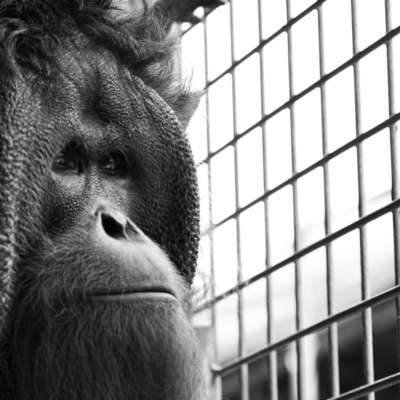
If these orangutans are not killed by bounty hunters, they still provide lucrative sources of income for wildlife poachers. Many of the orangutans in rehabilitation have traumatic former lives as pets or in circuses. The gruesome 2003 case of Pony, who was kept as a sex slave on a palm oil plantation, demonstrates how long these abuses have been going on.
While the global public is becoming more aware of deforestation and the illegal wildlife trade, the sophistication of wildlife poachers’ methods is also increasing. WRC Jogja Director Rosalia Setiawati is well aware of the tricks that illegal traders use, including systems of ringtone codes and burner phones, to stay one step ahead of law enforcement. Until the global demand for palm oil and exotic animals is extinguished, any real progress toward wildlife conservation goals will likely continue to be nullified by the work of poachers.
Deforestation endangers orangutans; it also affects other animal and plant species that don’t receive much or any media attention. “If you lose orangutans, you lose the 40 types of plants that are grown through their digestive systems,” Setiawati said. Sihite agrees, calling orangutans “the gardeners of the forest.”
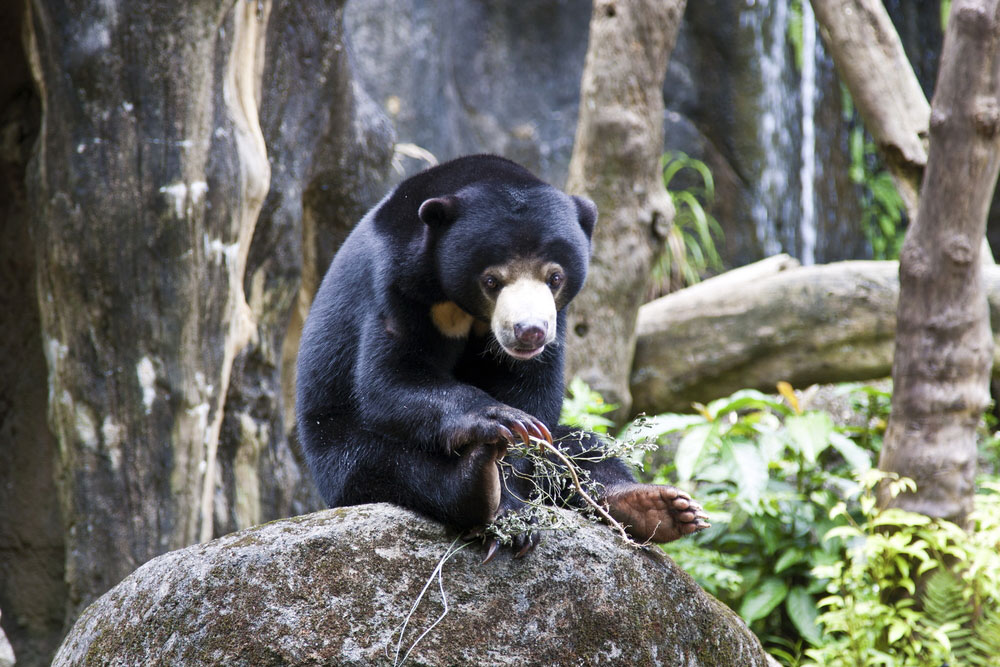
Boycotting Palm Oil Is Not Enough
Every day spent steadfastly boycotting palm oil is a day in which 25 orangutans worldwide are still killed due to habitat destruction. Large manufacturing companies, whether compelled by government policies or not, must eradicate unsustainable sources of palm oil from their supply chains in order to save the orangutans. All countries that import palm oil need to ban the ubiquitous commodity as a first step to rehabilitate damaged forests, conserve wildlife and put an end to orangutan killings.
More than a decade ago in the U.K., Friends of the Earth campaigned against palm oil for a year. Activists protested outside storefronts to pressure Tesco and other major retailers to develop a framework for certifying sustainable palm oil production as such. Creating this distinction in the marketplace is another first step toward raising consumer awareness about the hazards of non-regenerative palm oil production.
Kristianto would be more than happy to put himself out of a job if palm oil companies radically alter their production practices to prioritize wildlife conservation. “Conservation is not about how much we rescue the orangutans,” he said. “It’s about how much people care about them. Conservation is successful when you don’t have to rescue them anymore.”
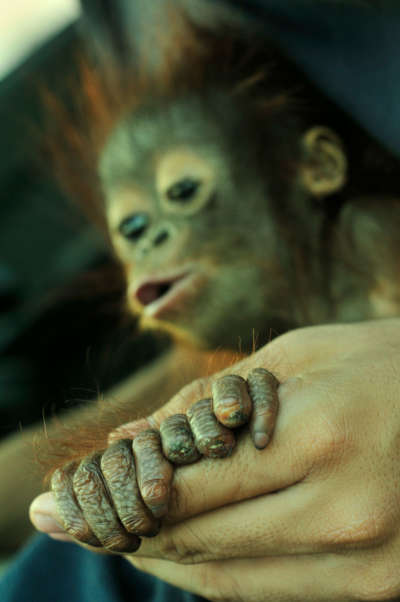
The imperative to save the orangutans presents a predicament for Indonesia’s government, which is attempting to balance frenetic economic development with a dire need for species and habitat conservation. Partnerships among government entities, industry participants and conservation groups are essential to saving the orangutan, Indonesia’s national gem, along with the hundreds of other animal and plant species endangered by habitat loss.
Sihite offered this analogy about the urgent need for cooperation: “Everybody has their own part to play. Nobody is bigger than the other,” he begins. “But sometimes it’s not about resources, it’s about the willingness. We work together like an orchestra. How can you say the violin is better than the piano? The piano is more expensive than the violin, but in the orchestra, all have the same role to play in order to make a symphony nice to hear.”
But what if the piano is not playing its part? Orangutans have yet to benefit from the harmony of a concerted, nationwide conservation effort to protect their rapidly dwindling species.
Join us in defending the truth before it’s too late
The future of independent journalism is uncertain, and the consequences of losing it are too grave to ignore. To ensure Truthout remains safe, strong, and free, we need to raise $44,000 in the next 6 days. Every dollar raised goes directly toward the costs of producing news you can trust.
Please give what you can — because by supporting us with a tax-deductible donation, you’re not just preserving a source of news, you’re helping to safeguard what’s left of our democracy.
